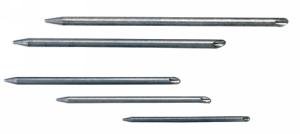Midpack
Give me a museum and I'll fill it. (Picasso) Give me a forum ...
If I wanted to roll one end of some stock small diameter tubing to a point, could I do it without costly specialized equipment? From what I've found with online search, it appears it requires costly equipment.
I'm talking thin wall tubing aluminum, brass or copper 1/8" to 1/2" in diameter, and for lack of a better description the end product would look much like a hollow knitting needle. I'm attempting to make my own splicing fids for anyone who's familiar.
Not seeking to find someone here to do it for me, but this is a resourceful group, so I thought I'd ask.
Off the Wall Question of the Day if you're wondering...
I'm talking thin wall tubing aluminum, brass or copper 1/8" to 1/2" in diameter, and for lack of a better description the end product would look much like a hollow knitting needle. I'm attempting to make my own splicing fids for anyone who's familiar.
Not seeking to find someone here to do it for me, but this is a resourceful group, so I thought I'd ask.
Off the Wall Question of the Day if you're wondering...


